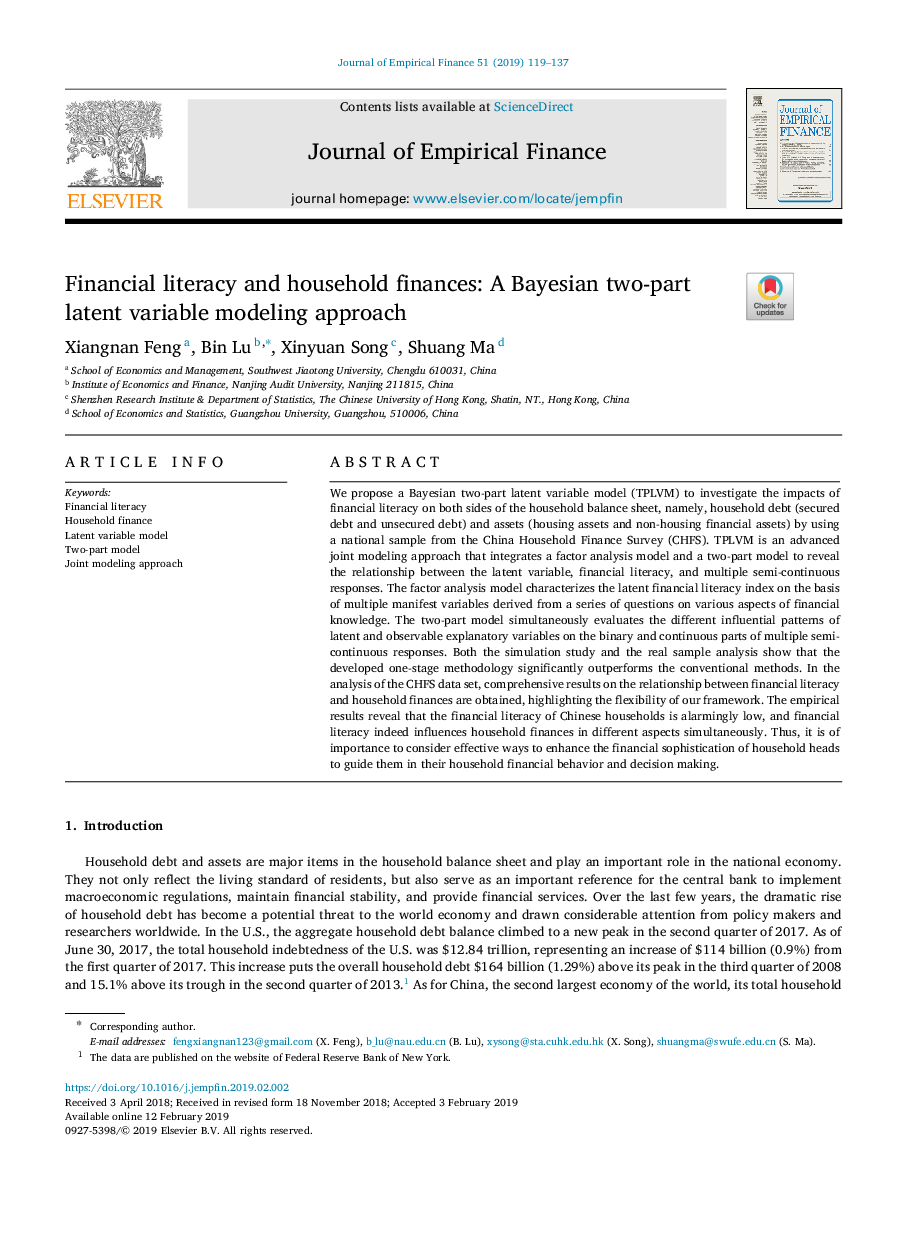| Article ID | Journal | Published Year | Pages | File Type |
|---|---|---|---|---|
| 13460696 | Journal of Empirical Finance | 2019 | 19 Pages |
Abstract
We propose a Bayesian two-part latent variable model (TPLVM) to investigate the impacts of financial literacy on both sides of the household balance sheet, namely, household debt (secured debt and unsecured debt) and assets (housing assets and non-housing financial assets) by using a national sample from the China Household Finance Survey (CHFS). TPLVM is an advanced joint modeling approach that integrates a factor analysis model and a two-part model to reveal the relationship between the latent variable, financial literacy, and multiple semi-continuous responses. The factor analysis model characterizes the latent financial literacy index on the basis of multiple manifest variables derived from a series of questions on various aspects of financial knowledge. The two-part model simultaneously evaluates the different influential patterns of latent and observable explanatory variables on the binary and continuous parts of multiple semi-continuous responses. Both the simulation study and the real sample analysis show that the developed one-stage methodology significantly outperforms the conventional methods. In the analysis of the CHFS data set, comprehensive results on the relationship between financial literacy and household finances are obtained, highlighting the flexibility of our framework. The empirical results reveal that the financial literacy of Chinese households is alarmingly low, and financial literacy indeed influences household finances in different aspects simultaneously. Thus, it is of importance to consider effective ways to enhance the financial sophistication of household heads to guide them in their household financial behavior and decision making.
Related Topics
Social Sciences and Humanities
Economics, Econometrics and Finance
Economics and Econometrics
Authors
Xiangnan Feng, Bin Lu, Xinyuan Song, Shuang Ma,
